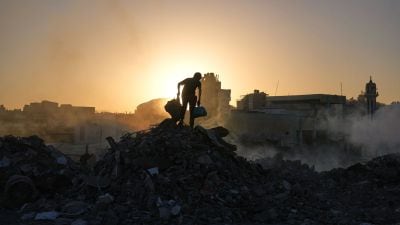Stay updated with the latest - Click here to follow us on Instagram
ASI restoration work makes conservationists complain
With the Archaeological Survey of India undertaking large scale conservation work before the upcoming Commonwealth Games,the changing look of heritage structures has sparked off a debate among conservationists and heritage enthusiasts.
With the Archaeological Survey of India (ASI) undertaking large scale conservation work before the upcoming Commonwealth Games,the changing look of heritage structures has sparked off a debate among conservationists and heritage enthusiasts.
A section of heritage conservationists has expressed concern over the new look of these monuments.
Heritage structures like the Quli Khans tomb near Mehrauli,Shakri Ghumti and Chhoti Ghumti in Hauz Khas,and tombs in the Lodhi Gardens are being restored,raising a debate over the real look of these ruins.
Conservationists argue that re-plastering of monuments makes them lose their heritage look and appear like newly plastered buildings.
But the ASI and a section of conservation architects maintain that the re-plastered monuments will regain their antiquarian look over time. Conservationists engaged in restoring these monuments say to save these heritage structures from crumbling,it is necessary to replaster them,and that the new look will soon fade away.
The texture of the domes looks new but it does not mean the monument has lost its authenticity. After exposure to two seasons of rain,the organic material in the plastering mixture starts changing colour. With constant exposure to rain and wind,a patina develops and the monuments,which now look new,will get back their antiquarian look, an official of the Indian National Trust for Art and Cultural Heritage (INTACH),which is conserving tombs in Lodhi Gardens,said.
In the tombs being restored in Lodhi Gardens,it was necessary to completely redo the plastering,as patchwork would have only increased the gap between the old and new layers of plaster. The original plaster of the dome was in a bad shape,hence proper consolidation was required, the official said. But there can be instances where the ratio of lime,brick powder and other ingredients is not correct. In such cases,colour of the plastered portions might change abruptly and not remain in sync with the monument.
ASI officials maintain that terms like authenticity and integrity of heritage structures sound good but during conservation several compromises have to be made for practical implementation.
It is easy for theoreticians and puritans to make arguments but during field conservation work,several factors have to be kept in mind. The conservation work has to be kept economical. Also,condition of the heritage structure needs to be taken into consideration, K K Muhammed,superintending archaeologist,Delhi Circle,ASI,said. At times,complete replastering and heavy restoration work becomes necessary to protect a monument from crumbling.
To ensure uniformity and that the mixture has the right proportion of ingredients,it is made in factory sites like Tughlaqabad and Siri Fort,where largescale conservation work is being carried out. For smaller monuments,the mixture is sent from these sites, Muhammed said.







